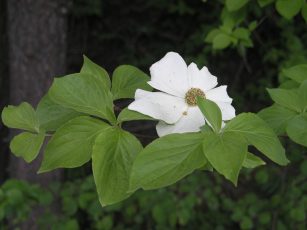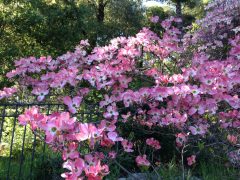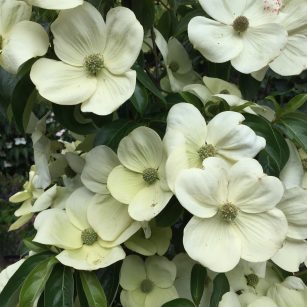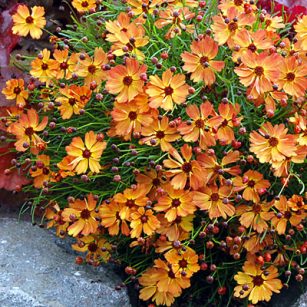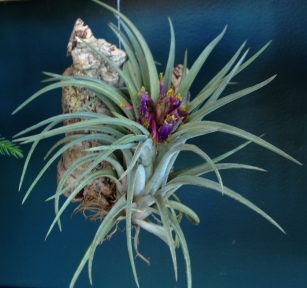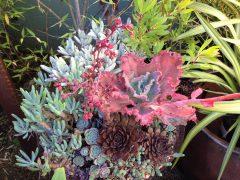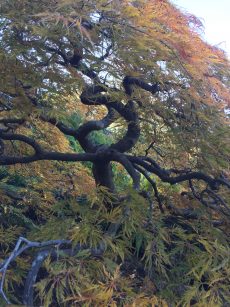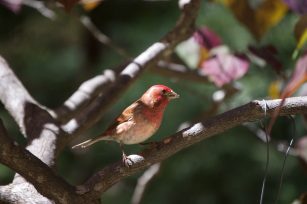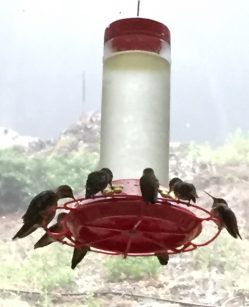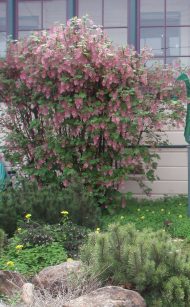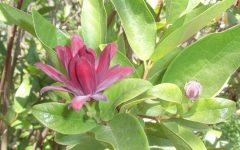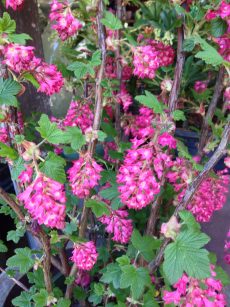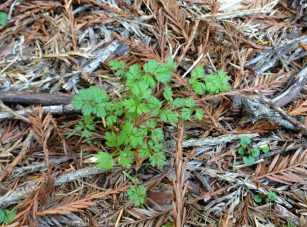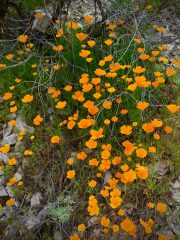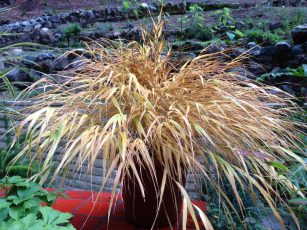Finally the rain has come. Outside my window a Townsend warbler feasts on suet. It?s a rainy day and I?m enjoying the vivid colors of my late fall garden. Backlit leaves take on a whole new look.There are so many ways of combining plants in the garden. I?m taking notes so I remember my favorites to include in my own garden and future designs.
Many of my grasses and plants are deciduous and are in the process of going dormant. Even when I mix in broadleaf evergreen plants these groupings lose their impact this time of year. I have only been gardening at this house for a few years so the new plants are still small except the ceanothus that grow like a weed. I?ve had to replant many shrubs and perennials as I was a little cavalier with my gopher basket use at the beginning. But I persevere as I love color in the garden, especially foliage color.
It?s the combinations that look great year-round that hold a garden together. I?ve got two leucadendron that are real troupers when it comes to drought, mucho summer sun, zero winter sun, sandy soil and deer browsing.
The ?Safari Sunset? shows off those vivid burgundy bracts nearly year round with the best show starting during the summer and extending right through to the next spring. Leaucadendron require good drainage and prefer acidic conditions. It?s easy to love this plant to death with too much water.

Yellow is always a cheery color in the garden at any time of year. The deep golden flowers of Mexican marigold are carried on branch ends sporadically all year, peaking in winter and spring. Finely divided leaves are strongly fragrant when crushed and smell like a blend of marigold, lemon and mint which is why deer avoid them. Prune them lightly to control shape and size. They grows 3-6 ft tall and as wide. Another shrub that blooms all winter and has yellow daisies is euryops. They are deer resistant and grow to about 3 ft.
Blue and yellow foliage or flowers combine well. You can pick from yellow or gold foliage plants such as phormium ?Yellow Wave?, abelia ?Kaleidoscope?, coleonema ?Sunset Gold? or sedum ?GoldMoss? and pair it with a dwarf blue spruce, blue fescue or blue oat grass, hens and chickens, a blue euphorbia such as ?Glacier Blue? or ?Blue Haze? or the blue-gray succulent senecio mandraliscae.
If you have a little more space, try ‘Rose Glow’ leptospermum near a ceanothus ‘Concha’. The contrast between the deep red flowers of the tea tree with the bright blue flowers of the California lilac will certainly get your attention. These larger shrubs reach about 6 ft tall and as wide.
You might have one of the following butterfly favorites that you could divide and pot up for a friend. Yarrow, aster, veronica, agapanthus, astilbe, coreopsis and gaura to name a few that butterflies favor. Ceanothus and columbine are two plants that self sow in my garden and would be great to pot up for a gift. A gift doesn?t need to cost very much to show you care.

With the holiday season upon us think of giving plants as gifts. Any of the above plants would be appreciated by fellow plants lovers or you could give an offset of one of your plants that birds, bees or butterflies would appreciate. Some easy-to-divide favorites that attract birds include foxglove, coral bells, red-hot poker, California fuchsia, mahonia and purple coneflower.

